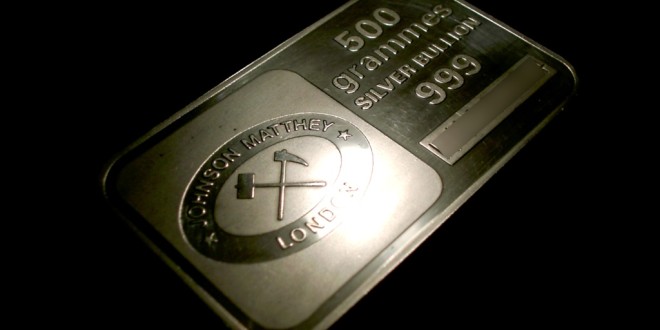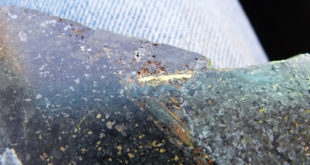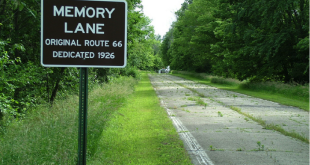Market commentary
What a week it has been! There have been numerous reports for the last two weeks of the Japanese piling into the yellow metal, in advance of the March 31st cap on bank deposit insurance. Those who watched ABC Evening News in the USA tonight were treated to the spectacle of Japanese housewives buying kilo bars to protect the family savings. Let me say that again just in case you can’t believe your eyes. Yes, they were buying gold bars – not US Dollars – GOLD BARS, and it was on mainstream media T.V. at prime time. This wasn’t like the Argentines lined up to sell pesos for dollars as we’ve seen on the news recently. The Japanese have substantial savings socked away, and they’re sinking it into gold. The commentator talked about a possible debt implosion that could rock America if substantial holdings of American bonds and equities are liquidated.
Monday, the Japanese market was closed; other Asian markets were closed for several days this week. On Monday morning, Prudential Securities analyst John Tumazos chopped his target for Newmont Mining Corp. by more than half, and moved his rating to “sell” from “hold”. This was trumpeted by Bubblevision on a halfhourly basis the whole day, beating the gold price down from a two-year high. On Tuesday, Bloomberg News blamed the preceding day’s fall in the gold price “on expectations that a 6% surge in prices last week will curb demand from jewellers”.
Point One: Those who follow the markets know that analysts rarely issue “sell” ratings, unless a stock is already crashing and they are stating the obvious. In fact, WorldCom, which is rumoured to have accounting problems and has recently plunged, is still championed by Wall Street. According to Bloomberg, 19 of 26 brokers canvassed still maintain “strong buy” or “buy” ratings. In street speak, a “hold” rating usually really means “sell”. A real “sell” rating means the stock is poison. Now, with gold at a two year high, and Newmont positioned to become the world’s largest gold miner does it really look better than WorldCom?? Is this the time to sell? Now?
Point Two: The history of gold is unlike other commodities – it actually attracts buying interest when its price is higher. Its behaviour is countercycle to other commodities. The images of Japanese housewives buying kilo bars when gold is at a 2-year high in US dollar and way up in Yen terms is undeniable proof of this. To say that gold demand will go down because of a $20 or so price rise….well….let’s put this statement to the test. I spoke to a jeweller friend of mine this evening and asked her what an average woman’s ring weighs. She said anywhere from 1.5 to 3 pennyweights – 4.5 is “real chunky”. The most popular women’s jewellery in USA is 14 carat (58.5% gold content). Let’s be on the high side and use the 4.5 pennyweight figure. A pennyweight is 1.555 grams. Doing the math, the rings weighs 6.9975 grams, and contains 4.0935 grams of gold, equivalent to 0.1316 oz of gold. A 6% rise in the gold price, say from $283 to $300 represents a measly $2.24 increase in the value of the gold. Maybe I’m being a bit pedantic with all this, but it seems to me two bucks a ring is hardly going to discourage women from buying jewellery. In the sound-bite culture we are immersed in, everyone should have their BS detector turned on “high”.
Regarding the timing of the Prudential and Bloomberg statements, the Bard said it best:
Though this be madness, yet there is method in it.
– Hamlet Act II, Scene 1
As this coming Monday is a market holiday in the USA, expect some fresh goldbashing statements in the press, while the anti-gold forces try to regroup.
Declines in the Gold Mining Industry
John Tumazos from Prudential said he was downgrading Newmont because it had released falling reserve numbers. Well, the analysts better get used to it, because the situation for the gold industry is going to get worse before it gets better. Back in the 1980’s, large companies wouldn’t look at a project unless it had the ability to yield a million ounces of mineable gold. In the 90’s the bar was raised to 2 million. In recent times it has got even higher, and analysts expect mining companies to go out and develop potential 5 million ounce producers. A few projects have developed into these big whoppers, such as Bulyanhulu, Pierina, and Yanacocha. It looks like Pascua-Veladero will be huge too. The senior gold producers want these big operations because they can cut production costs due to economies of scale. Only large projects such as these will significantly add to their bottom line and give good return on investment. As the gold price has been declining, costs for fuel, labour, electric power, etc. have increased, putting the profit squeeze on miners. The large capital costs of building a mill, roads, power lines and other infrastructure can be amortised over a number of years if a mine is huge. A mine life of only a few years doesn’t offer these opportunities.
There is no getting away from a fundamental fact about mining. As mining progresses the resource is depleted – it is a “wasting asset”. Many mines have been able to add new reserves incrementally each year through underground exploration to offset their production. The Red Lake Mine of Goldcorp is an example of a mine which was largely regarded to be on its last legs, that has a new lease on life because a new style of mineralization was encountered in deep exploration. This however is the exception rather than the rule – eventually and inevitably mines are “worked out”.
With the new environmental awareness prevalent over the last 25 years, mining has very much changed. I remember in the late 1980’s travelling to a gold mine in a very remote area of northern Ontario and finding an entire abandoned town almost virtually intact. The owners had shut the mine with little warning in 1953 and had gone from house to house, appraising the furniture inside and compensating the mine employees. It was all abandoned within two days, so the story goes. There was still dynamite in the explosives shack and the miners’ lanterns were still lined in place to be charged up. Many of the roofs of the houses had fallen in, but the mine office was still intact, though the filing cabinets had been looted and their contents emptied on the floor.
These days if a mine closes in Canada or the USA it must be restored back to its natural state, which means removal of all the surface buildings and equipment, capping the shaft, regrading and contouring the site, removal of the access roads, and stabilization and reclamation of any tailings. A hundred years from now, our descendants won’t get the chance to tour around picturesque mining ghost towns circa 1990. There will also be virtually no chance in future of anyone going back to these sites to tap low-grade left behind. In former times, failing gold mines would be sold to successively smaller players, and the one at the end of the line would typically go bust. The mine would be allowed to flood, but the infrastructure, though abandoned, was left intact. After government was stuck with the clean-up bill for mining disasters like Summitville, the situation radically changed.
Some mines see the end coming and plan ahead for closure. Some decide to put the mine on a care-and-maintenance basis, hoping for better gold prices in the future. Others are blindsided and go bankrupt – usually the writing is on the wall for these operations so that their closure is not too much of a surprise. State and provincial governments know that if a company goes bust, government will probably be stuck with the bill to reclaim the site, and so they are tolerant of mines going into mothball mode – but only for so long. In the early 1990’s the socialist NDP government of Ontario imposed draconian mine closure plans on mining companies, including open-ended site liability on sites that had been abandoned and entirely reclaimed. The current government takes a more rational approach, realizing that once a mine closes for good, many of the former mine employees or those in spin-off jobs may have to depend on government handouts to get by, especially in company towns. In some jurisdictions government is a bit forgiving; in others it is dictatorial and orders reclamation to begin after mining has ceased for a certain period of time. Some companies which can’t afford to pay for reclamation even attempt to keep their mines on a care-and-maintenance basis perpetually to avoid closure costs. These mines may be exhausted, with no hope of revival; but keeping a mine pumped and dry is expensive and eventually catches up with operators with limited sources of income. Even if gold should shoot up to $600/oz, don’t expect companies to revive minesites that have been closed and reclaimed in the last 20 years, or even to flick a switch on suspended projects and suddenly start producing ounces. It’s not that simple. And, if the infrastructure has been removed it is highly unlikely that it will ever pay to put it back.
I decided to do a little bit of research to see what the situation is like. I consulted the site of the Canadian National Research Council for information on operating gold mines. The site is seriously out of date, but provides some useful information. http://www.nrcan.gc.ca/ms/efab/mmsd/minerals/gold.htm#producers I think I have most of the significant producers listed below.
Canada: older operating gold mines:
- Dome Mine opened 1909 (currently operating)
- Con Mine opened 1938 (currently operating)
- Mouska 1942-47 reopened 1991 (currently operating)
- Giant 1946-1999 reopened 2000 will probably permanently close 2002
- Red Lake Mine opened 1949 closed by strike in 1996, reopened 2000 (operating)
- Campbell Red Lake opened 1949 (operating)
- New Britannia 1949-1958, reopened in 1995 (currently operating)
- Doyon opened 1980 (currently operating)
- Lupin opened 1982 closed 1998 reopened in 1999 (operating)
- Williams opened 1985 (currently operating)
- David Bell opened 1985 (currently operating)
- Golden Giant opened 1985 (currently operating)
- Holt-McDermott opened 1988 (currently operating)
- Laronde opened 1989 (currently operating)
- Bousquet 2 opened 1990 (currently operating)
- Hoyle Pond opened 1990 (currently operating)
- Seabee opened 1991 (currently operating)
Operating mines opened since 1992:
- Sleeping Giant opened 1993 (currently operating)
- Eskay Creek opened 1995 (currently operating)
- Eagle River Mine opened 1996 (currently operating)
- Holloway opened 1996 (currently operating)
- Musselwhite opened 1997 (currently operating)
- Edwards opened 1997 (currently operating)
- Troilus (copper-gold) opened 1997 (currently operating)
- Hammerdown opened 2001 (operating)
Closed or Suspended Operations in the last 10 years:
- Beufor 1996-2001 (suspended due to ground conditions)
- Stog’er Tight 1996-1997 (suspended operations)
- Sigma-Lamaque 1937-2001 (underground permanently closed, open pit suspended)
- Glimmer 1997-2001 (suspended operations)
- Bissett reopened and suspended 2001 (the former San Antonio Mine)
- Brewery Creek 1997-2001 (suspended)
- Nugget Pond 1998-2001 (depleted)
- Joe Mann (suspended indefinitely)
- Bachelor Lake closed 1992, had been on care-and-maintenance since 1989
- Lawyers (1989-1992) owners bankrupt
- Dona Lake (1989-1994) permanently closed
- Komis (1996-1997)
- Nighthawk (previous historic production)1996-1999 declared uneconomic
- Stock Mine 1994 on care-and-maintenance
- Silidor (1990-1998) permanently closed
- Detour Lake (1983-1999) permanently closed
- Casa Berardi (1988-1997) suspended
- Chimo (1986-1996) depleted
- Nickel Plate (1987-1996) permanently closed
- Evening Star (closed 1996)
- Premier (1989-1996) permanently closed
- Colomac (1990-1997) permanently closed
- Hope Brook (1987-1991 & 1992-1997) permanently closed
- Pamour (previous historic production) 1990-1999 declared uneconomic
- Kerr (1938-1982 & 1990-1997) permanently closed
- Cheminis previous historic production (1990-1995) on care-and-maintenance
- Macassa (1933-1999) on care-and-maintenance
- Eagle (1974-1994) permanently closed
- Telbel (1984-1994) permanently closed
- Francoeur (previous historic production) (1991-2001) depleted
- Lac Shortt (1985-1992) permanently closed Snip (1991-1999) permanently closed
One thing that is immediately apparent is that there have been many, many more closures in the last 10 years than new openings. Also, that many Canadian gold mines are getting old, Dome is almost officially an antique! A number of these operations are no longer adding to their reserve base and are anticipating closure in the next few years.
It could be argued that the lack of new mine openings in Canada is due to a shift in exploration expenditure outside of Canada – to Latin America, Africa, and Asia. Significant large projects have indeed opened or are anticipated in these regions, but the absolute numbers of new mines are falling. The above scenario I’m sure could be duplicated for the USA, Australia, and South Africa.
A study by BHP Minerals published in 2000 asked, “What discovery rates would be required if the industry had to replace gold reserves at the current rates of production, by new grassroots discoveries?”
The answer is fifteen, 5 Million ounce gold deposits annually.
Exploration has been in the doldrums for five years, and the junior sector as we know has been trashed – five years in which the brooding stock has produced almost no new chicks. So, in the next few years expect more industry consolidation as companies use the only available means at hand – mergers and takeovers – to secure ounces in the ground. Gold production is now in decline and is forecasted to continue in decline for several years, no matter what the price does. It will take several years of playing catch-up to get production anywhere near current demand levels.
 Straight Talk On Mining Insights on mining from economic geologist Dr. Keith Barron.
Straight Talk On Mining Insights on mining from economic geologist Dr. Keith Barron.




